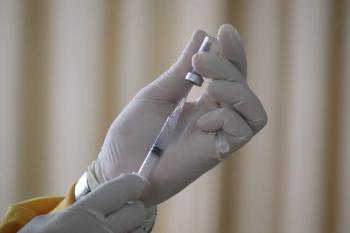
Assessing HIV Disparities Among Transgender Community
A new review shows transgender women face higher HIV rates than transgender men, but also finds a relative lack of data about transmen.
Transwomen are known to face a higher risk of HIV infection than the general population, particularly if they are black or Hispanic. A similarly heightened risk has also been seen among transmen, though they have not been studied to the same extent. A new literature review, published in the
Investigators from the US Centers for Disease Control and Prevention and from the consultancy ICF International sought to gain a better understanding of HIV rates, as well as behavioral factors among the transgender population. In order to do so, they reviewed 88 studies conducted between 2006 and 2017, most of which were cross-sectional.
After reviewing the data, the authors calculated an overall laboratory-confirmed HIV-positive prevalence estimate of 9.2% among transgender people. They estimated that 14.1% of transwomen are HIV positive and 3.2% of transmen have the virus.
Self-reported HIV status in the studies was higher for transwomen (21%), and lower for transmen (1.2%), for an overall self-reported HIV prevalence of 16.1%. Among black transgender people—the group found to be most at risk—the estimated HIV rate was significantly higher, at 44.2%. The review also showed that nearly one-third (31%) of transgender people had participated in sex work, with transwomen (37.9%) reporting higher rates of sex work participation than transmen (13.1%).
Part of the significance of the new article is that, by combining data from several dozen studies, the investigators were able to separate out and compare data about transwomen versus transmen, which proved insightful.
“This study highlights gender disparities for HIV and risky sexual behavior, as well as evidence gaps that exist for transmen,” concluded first author Jeffrey S. Becasen, MPH, of the CDC. Becasen and colleagues said the findings of their research highlight the need for tailored public health programs that reach out specifically to the transgender community.
A separate study published this month showed that New York City has been successfully decreasing the HIV outcome gap between transgender people living with HIV (PLWH) and cisgender PLWH.
While the overall proportion of transgender people in New York City who are living with HIV increased from .8% to 1.3% between 2007 and 2016, the percentage of transgender PLWH with CD4 cell counts at or above 500 cells per cubic millimeter jumped from 32% to 60%. The latter number is virtually identical to the healthy CD4 count rate among the city’s cisgender PLWH, which was 61%.
The city also narrowed the viral suppression gap between cisgender and transgender people. In 2007, the gap was 10 percentage points, (52% viral suppression rate for cisgender people and 42% for transgender people). By 2016, 80% of cisgender people and 73% of transgender people had achieved viral suppression.
Still, the authors of that study, published in the
The article "
Newsletter
Stay ahead of emerging infectious disease threats with expert insights and breaking research. Subscribe now to get updates delivered straight to your inbox.















































































































































































































































































